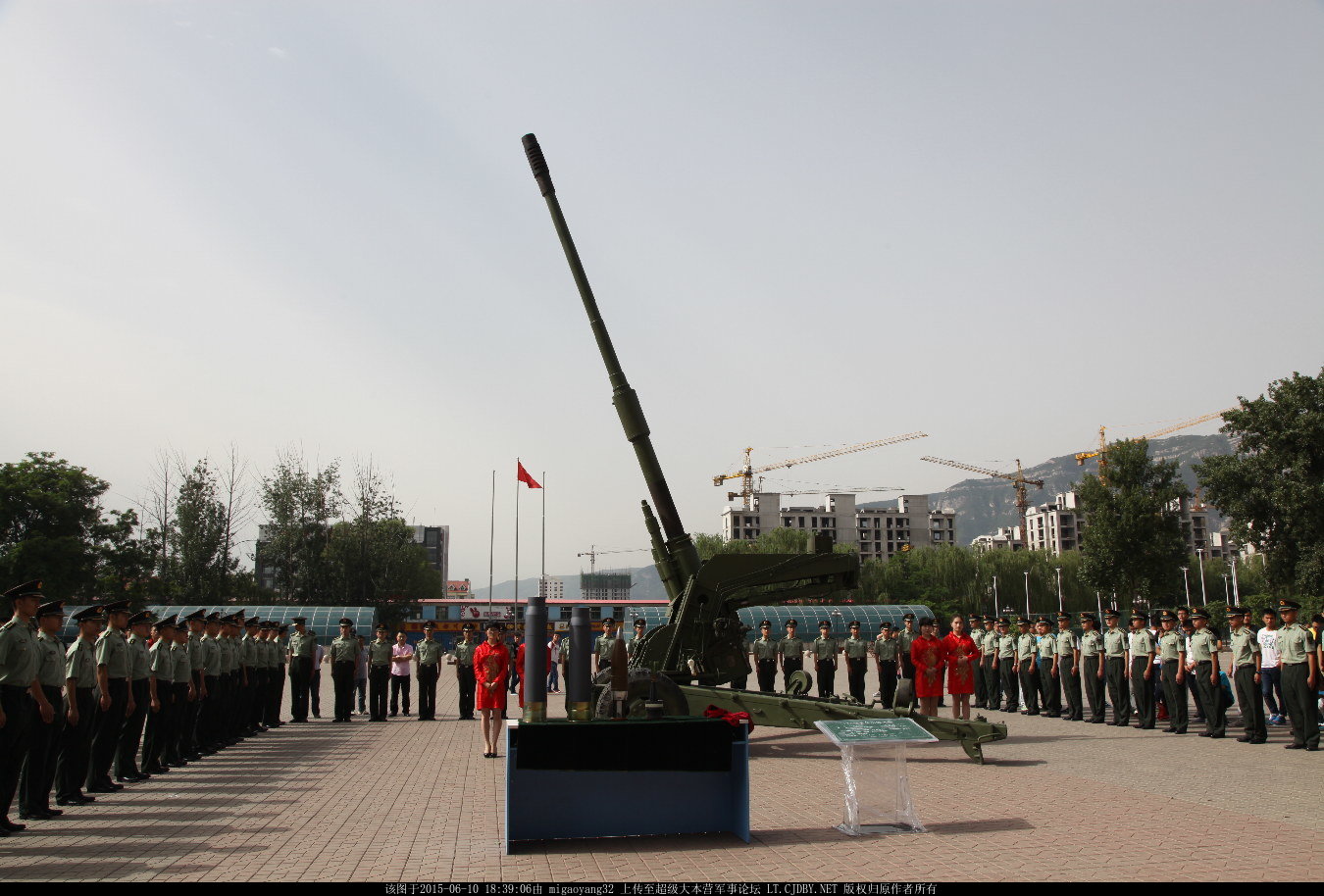

While new tanks like the Russian Armata and Turkish Altay are taking the spotlight in the world of armored vehicles, China has a new tank gun that might just beat them all. The 127th Ordinance Institute, of the Central Northern University, handed over a new 125mm cannon to PLA officers at a June 10, 2015 ceremony. The Institute claims that the new multipurpose cannon will have the highest range, velocity and penetration power of any 120mm/125mm cannon in the world. Where the story gets more interesting is that by June 14, all references to the new 125mm cannon had been scrubbed from the University’s website, which suggests an official desire for secrecy during tests.

The multipurpose cannon achieves its high performance through a high length to caliber ratio of at least 60:1 (the longest tank gun in service is the German 120mm cannon, which has a ratio of 55:1), and a larger cartridge, that stores more propellant explosives. While the multipurpose cannon is currently mounted on a towed carriage, several characteristics suggest that it is intended in use for enclosed spaces (IE tank turrets).

Located on the middle of the barrel is a bore evacuator that aids in the release of combusted explosive fumes, to prevent those toxic gases from accumulating inside an enclosed space, which would otherwise poison crew members and foul the gun. The multipurpose cannon’s recoil system is installed onto the top of the towed carriage frame and top of the cannon breech block, which is optimized for horizontal firing (anti-tank and direct fire) as opposed to high angle artillery fire.

This multipurpose cannon reportedly has a muzzle velocity of 2,000m per second for armored piercing fin stabilized discarding sabot (APFSDS) rounds, whose discarding sabot concentrates the kinetic energy from propellant into frontal area of the penetrator rod, which is the size of a half dollar coin. For comparison, current Chinese 125mm APFSDS have a 1700m/s muzzle velocity, the German L55 has a muzzle velocity of 1,750m/s, and the US’s M829A3 APFSDS round has a muzzle velocity of only 1,555m (but uses a larger penetrator with increased mass to increase imparted kinetic energy).

Just as importantly, the new tank cannon uses one piece ammunition, in contrast to the 125mm two piece ammunition used by current Chinese tanks such as the ZTZ-99 and ZTZ-96. The autoloader on those tanks are limited to two piece 125mm ammunition due to size restrictions, which in turn results in a smaller APFSDS rod with less kinetic energy. The new one piece 125mm ammunition will allow for larger APFSDS rods, while keeping the caliber to 125mm to save weight, as opposed to scaling up to a larger caliber, such as 140mm.

The 125mm multipurpose cannon is likely to be mounted on a new future Chinese tank, which will have to move its autoloader into the rear turret bustle, compared to the hull mounted ZTZ-99 autoloader. The long length of the multipurpose cannon may also mean that such future Chinese tanks would have limited maneuver room in tight urban spaces.

The multipurpose cannon’s high velocity gives it enough energy and range to theoretically take on anti-aircraft roles (similar to 127mm and 130mm dual purpose naval cannons), though size constraints in a tank turret would likely limit its firing rate and elevation when targeting high flying aircraft. More plausibly, the multipurpose cannon could provide indirect fire support with cannon launched missiles and shells for Chinese forces, such as distant, networked infantry units calling in strikes on enemy positions (though again turret size and recoil mechanisms means that the claimed maximum 40km range is likely theoretical).
Much as China is making high profile investments into new generation technologies battlefield robots, drones, infantry exoskeletons and smart missiles, its also making great improvements to current military technology like tanks. The new tank cannon is yet another example of how Chinese forces (and any foreign sales clients) will be far better equipped on any the battlefield of the future.
You may also be interested in:
Chinese Autonomous Tanks: Driving Themselves to a Battlefield Near You?
China Joins the Tank Biatholon, the “Sport” of Main Battle Tanks
